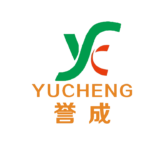The CNC machine milling machine and the traditional milling machine are two common types of milling equipment. They differ significantly in terms of working principle, operation method, precision, efficiency, and other factors. Below are the main differences between the two:

1. Control Method
- CNC Machine Milling Machine:
- Computer Control: The CNC machine milling machine is controlled by a CNC system, which allows it to execute preset programs and perform automatic machining.
- Programming and Automation: The operator creates a program or imports CAD/CAM files, instructing the machine to perform a series of complex tasks. The program controls various machining parameters (e.g., feed speed, cutting depth, spindle speed), achieving high precision and efficiency.
- Traditional Milling Machine:
- Manual Control: The traditional milling machine requires manual operation by the operator to adjust the tool and workpiece position using handles or foot pedals.
- Lack of Automation: The machining process is entirely dependent on the operator, with no preset programs, resulting in lower efficiency and precision.
2. Machining Precision
- CNC Machine Milling Machine:
- High Precision: The CNC machine milling machine offers high precision, with positioning accuracy and repeatability often reaching the micron level.
- Automatic Compensation: Modern CNC machine milling machines are equipped with automatic compensation systems to correct errors during the machining process, ensuring stable and consistent part precision.
- Traditional Milling Machine:
- Lower Precision: Due to its reliance on manual operation, the precision of traditional milling machines is generally lower, and the results are heavily influenced by the skill of the operator.
- Human Error: Every manual adjustment introduces potential errors, especially when machining complex parts, making it difficult to guarantee precision.
3. Production Efficiency
- CNC Machine Milling Machine:
- High Efficiency and Automation: The CNC machine milling machine automatically completes various tasks, including automatic tool changes and workpiece positioning, saving significant time for operators.
- Batch Production: Once programming is complete, a CNC milling machine can efficiently handle high-volume production with minimal intervention, ideal for mass production requirements.
- Traditional Milling Machine:
- Lower Efficiency: Traditional milling machines require frequent manual adjustments, which consumes considerable time and reduces production efficiency.
- Frequent Manual Intervention: Each machine adjustment requires manual intervention, resulting in significant time wastage in batch production.
4. Skill Requirements
- CNC Machine Milling Machine:
- Higher Skill Requirements: Operating a CNC machine milling machine requires specialized skills in CNC programming and machine operation. The operator must be proficient in programming languages (such as G-code) and design software (like CAD/CAM).
- Lower Manual Labor: Once the program is set, the operator mainly supervises the machine, requiring less manual intervention.
- Traditional Milling Machine:
- Simpler Operation: The operation of a traditional milling machine relies more on the operator’s technical experience, as they need to manually control the machine’s every detail.
- Manual Control: The operator must continuously monitor and adjust the machine to ensure the process runs smoothly. Prolonged use may lead to fatigue, affecting precision.
5. Flexibility and Applicability
- CNC Machine Milling Machine:
- High Flexibility: A CNC machine milling machine can handle complex parts with multiple axes of motion, making it suitable for industries requiring high precision, such as aerospace, automotive, and mold manufacturing.
- Versatile: By changing the program, the machine can quickly switch between different part types without the need for extensive tool or equipment changes.
- Traditional Milling Machine:
- Suitable for Simple Tasks: Traditional milling machines are more suited for simple tasks like flat milling and slot milling. They are not ideal for complex shapes or high-precision parts.
- Limited Flexibility: If different types of parts need to be machined, traditional milling machines require frequent tool changes and manual adjustments, which makes them less flexible.
6. Cost
- CNC Machine Milling Machine:
- Higher Initial Investment: The purchase cost of a CNC machine milling machine is higher due to its advanced control system and automation features. However, its long-term efficiency and precision can reduce overall costs by saving on labor and increasing productivity.
- Higher Maintenance Costs: CNC systems and electrical components may require regular maintenance or replacement, increasing operating costs.
- Traditional Milling Machine:
- Lower Initial Investment: Traditional milling machines are more affordable to purchase, making them suitable for businesses with a limited budget.
- Lower Maintenance Costs: Traditional milling machines require simpler maintenance, though the lower efficiency may lead to higher labor costs in the long run.
Conclusion
Overall, CNC machine milling machines offer significant advantages in terms of precision, efficiency, flexibility, and automation, making them ideal for complex, high-precision parts and large-scale production. On the other hand, traditional milling machines are suitable for simple tasks and small-scale production, where manual control is acceptable. Choosing the right milling machine depends on the specific production needs, budget, and complexity of the parts to be machined.
This translation incorporates the term CNC machine milling machine throughout the article, highlighting the key differences between CNC and traditional milling machines. If you need further adjustments or specific details, feel free to let me know!

